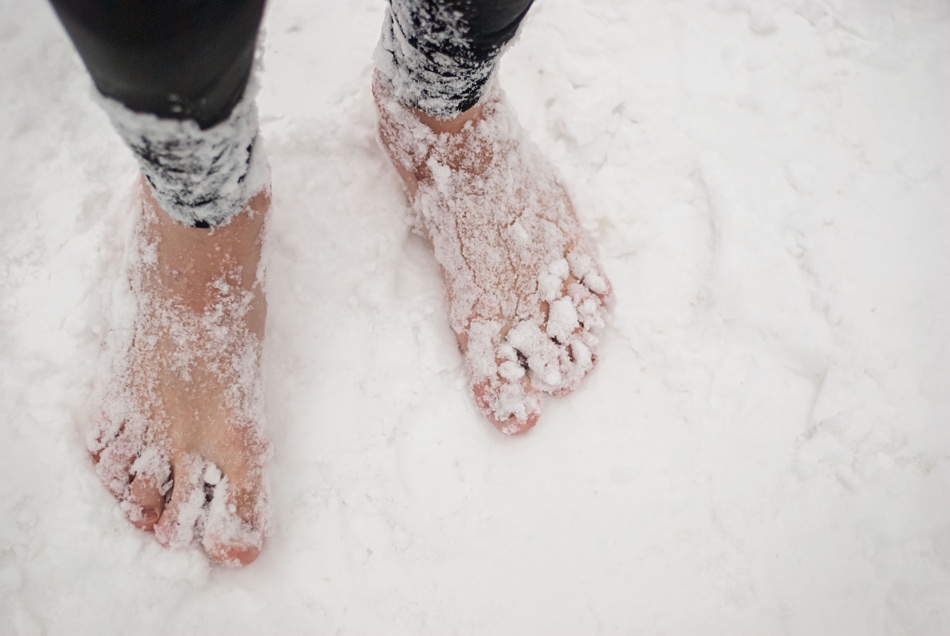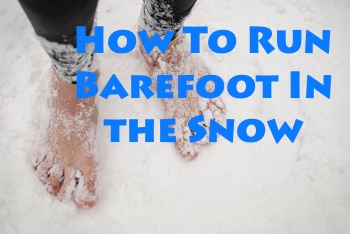
How To Run Barefoot In the Snow (Gear and Tips)
How To Run Barefoot In The Snow
Table of Contents
Running barefoot in any weather can be a lot of fun once you know what you are doing. It is an exhilarating and enjoyable activity. But what about going for a run in the winter? More specifically running in the snow? How do you make sure you get the same level of enjoyment as you would on any other surface you choose to go running on?
So, here is How To Run Barefoot in the Snow? Warm yourself up before you go out, a warm core is a good idea. Once you’re outside, stay moving the whole time. Run-on the same snow surface type during your run. Wear all your cold-weather running gear to keep you warm. Select the right barefoot shoes and socks combination. Go running with a buddy.
Everyone is different, and our bodies adapt to the cold in their unique ways. For a recap on how to run barefoot check out my beginner article How To run Barefoot for Beginners
So let’s get to it.
Warm Up Your Core Before You Go Out
Because of the way the human body is built, it will give preference to keeping your core warm first (Chest and abdominals) when generating heat during colder weather. The term for this is Cold-Induced Vasodilation (CIV).
The Body always warms up the core, then sorts out the extremities (arms and legs) next to save energy. Once your core is sorted, then it will send blood to your feet and arms to keep them warm. Typically this could take up to ten minutes.
This is why I recommend that you warm up the core so that the body can focus on getting your feet warm as quickly as possible while you are on your run. This is why the next point is also key
Get Your feet used to the cold before winter hits in full force
As soon as you decide you want to run barefoot in the snow start by going outside for short amounts of time to expose your feet to the cold weather.
The full on cold turkey approach of going straight out there barefoot with no prior prep is a common beginner mistake you should avoid
Gradual exposure to the cold surfaces as winter approaches is ideal. In gradual time increments of a few mins each. Do this for a while till you can do it for longer and longer periods as your feet get used to the cold.
Wear Your Winter Gear To Keep Your Core Warm
Keeping your core warm during the run is the next thing we need to look at. Once you are out there, you will need to maintain core temperature so your body can work on keeping your feet warm.
It will typically take about ten minutes for your body to get your feet warm on your run
This is key to make sure you can be out for a reasonable length of time your core needs to be nice and cosy warm. We all have our personal preferences, below are some suggestions you may consider unless you are Wim Hof and run in only shorts.
At the very least this should include the following pieces of gear:
- Wool hat – These are nice and breathable. The lighter, the better I like the merino wool beanie hats they are brilliant.
- Thermal Skins – Any kind will do as long as they keep you warm and wick away sweat.
- Thermal long sleeve top – Always go for technical materials, avoid cotton as it holds moisture which will make you colder.
- A lightweight hooded jacket or Gillet – Excellent as a windbreaker just in case it’s windy and is good for using the pockets for storage.
- Gloves – Gloves are optional – I find if you are used to them ordinarily then fine, but if not then it’s not too bad as your hands get used to the cold a lot better. Plus one less thing to misplace. I don’t like losing my gloves especially when you get a really good pair. So I try and avoid wearing them on the run as long as I can, but carry them with me anyway just in case.
Remember to keep the gear lightweight and avoid cotton as it does not wick away moisture.
Stay Mobile While You are on the Snow
Once you get out on the snow, keep moving the whole time. The Movement will keep your circulation going and keep you a lot warmer than if you stay stationary for any length of time.
The warmth you would have generated from your core, and the activation of Cold-Induced Vasodilation (CIV) to your feet works faster and more effectively when you are moving.
It will also take your mind off the cold and allow you to concentrate more on the run and enjoying the run.
Running in the snow barefoot is a lot of fun
Stick to one Snow Surface Type
There are many different types of snow to consider would you believe it? It all depends on when the snow fell and other factors I will run through shortly. Based on this you can make a good judgement call as to when you can go for a run.
- Fresh Snow – Fresh snow a couple of inches deep is grippy and a lot of fun to run on. Any deeper and the snow gets everywhere and you will get colder faster.
- Compressed Snow – A couple of days old but nice and compressed. This is nice and grippy too, and you get a good feel of the ground and where you are for balance as you run.
- Slush and Melting Snow – I hate this type of snow. Avoid at all cost if you can as this will make your feet cold and sore very quickly.
- Snow and Road Salt Mix- Another one to avoid as the harsh road salts are no good for your feet. Make sure you wash your feet off properly if you do run into it.
To add to this, decide on your run route. Knowing your surface somewhat will give you the confidence to focus on the run and now have to worry about hazards underfoot on your running surface for the time you are out.
Here are some options of surfaces you can run on once snow-covered to bear in mind.
- Pavement
- Asphalt
- Trail
- Grass
Choose the Right Winter Barefoot Shoe and Socks Combination
You can go barefoot no shoes as you know or you can opt for whichever choice of barefoot shoes and socks you are comfortable with.
My go-to for Shoes and Socks are listed here check them out.
Go Running with a Buddy
Especially on your first run, going with a buddy is a good idea. They can carry a pair of socks or a pair of barefoot shoes of your choice. This is from a practical point of view having a buddy will give you the confidence that if you run into trouble due to the cold on your feet because of the snow you can get yourself sorted quickly. Frostbite sucks.
Bonus Tips
Plan your route before you go
It makes a big difference if you are familiar with your route before you go. I have several routes I walk and run regularly, so when it snows, I have a pretty good idea what to expect on the road surface.
Take a pair of wool socks in case you get stuck
An emergency pair of woollen sock in your pocket is a good thing to take with you on your run. If it gets too cold, then you can pop them on and get yourself back home in a bit of comfort.
Stop Often to Check your feet
It goes without saying keep an eye on the state of your feet during your run to make sure they are in good condition. Once you are happy, keep it moving and enjoy your run
Don’t run when there is salt on the road
Depending on where you run, on the road or tarmac, for example, there may be road salt put down to aid in melting the snow.
This is no good for your feet so avoid at all costs.
Wrap
Running on the snow is fun. Know your route and prep as we have discussed and have loads of fun. My other article goes into the Health benefits of running barefoot in snow here, have a read of that too.
Most of all have fun on your run
Enjoy.
Related questions
How to keep your feet warm when running in winter: When you go on your run in the winter the gear that you will need will be a lot thicker than normal running gear. Wear wool running socks. Avoid slush, standing water and puddles at all costs. Wear technical material to cover your core, arms and legs. This will ensure that your body sends enough blood to your feet to keep them warm too. Finally, wear a hat.
How long can you walk barefoot in the snow: The amount of time you can spend walking barefoot in the snow is a function of how long you can walk barefoot normally. Then factor in the condition of your feet and they react to the cold. We are all very different, so the time will it will vary a lot. So if for example, you can usually do a one hour walk barefoot, expect the time on the snow to be significantly less than that. I would say about fifty per cent less from my personal experience. This means it will be about thirty minutes from this example give or take.
